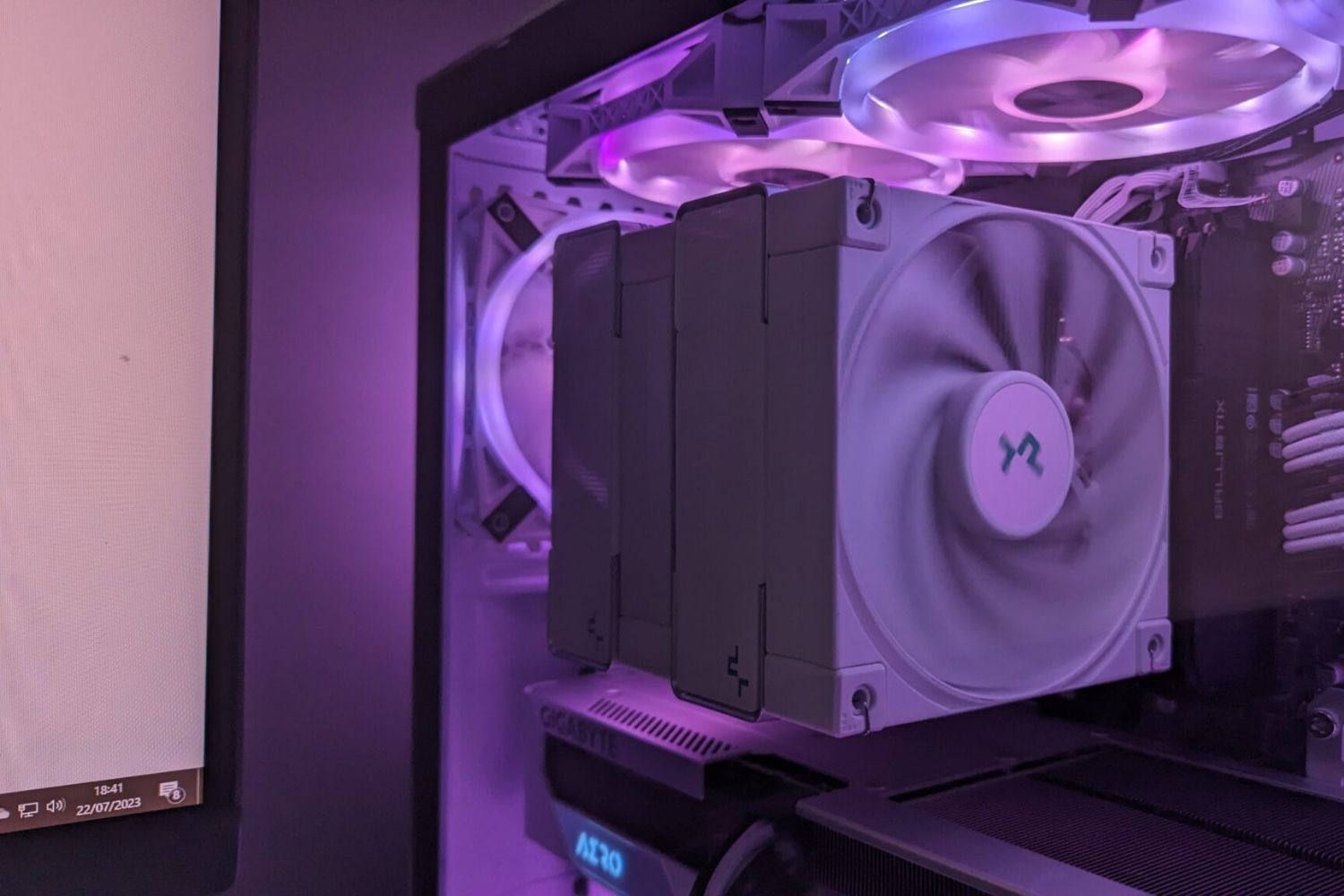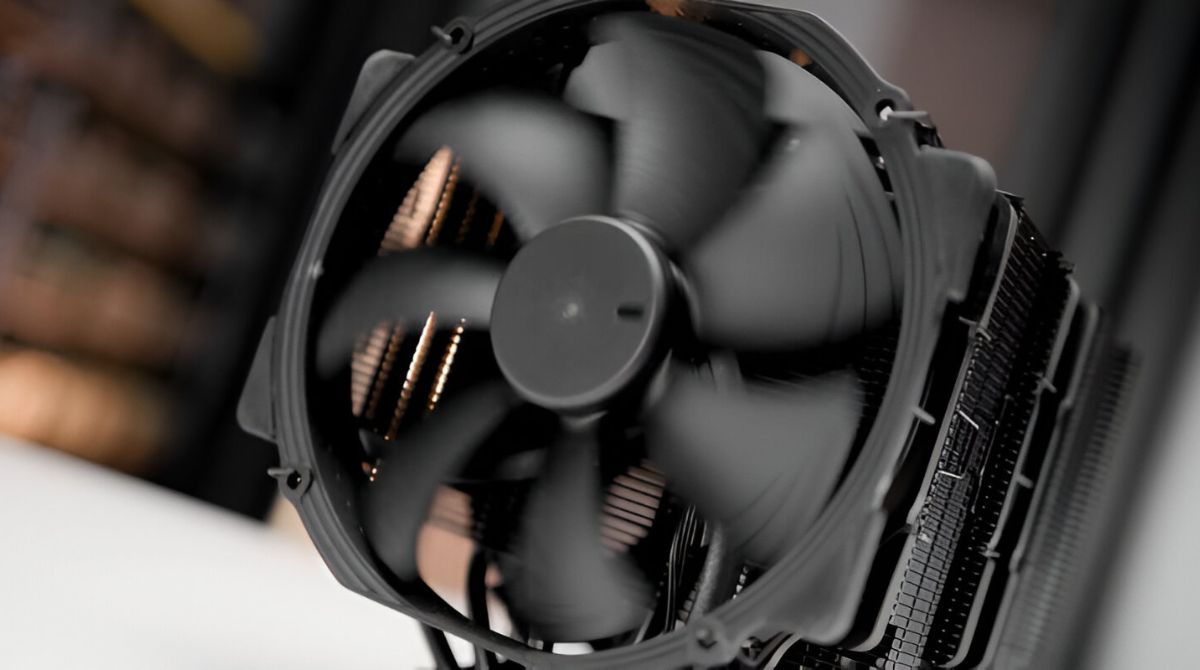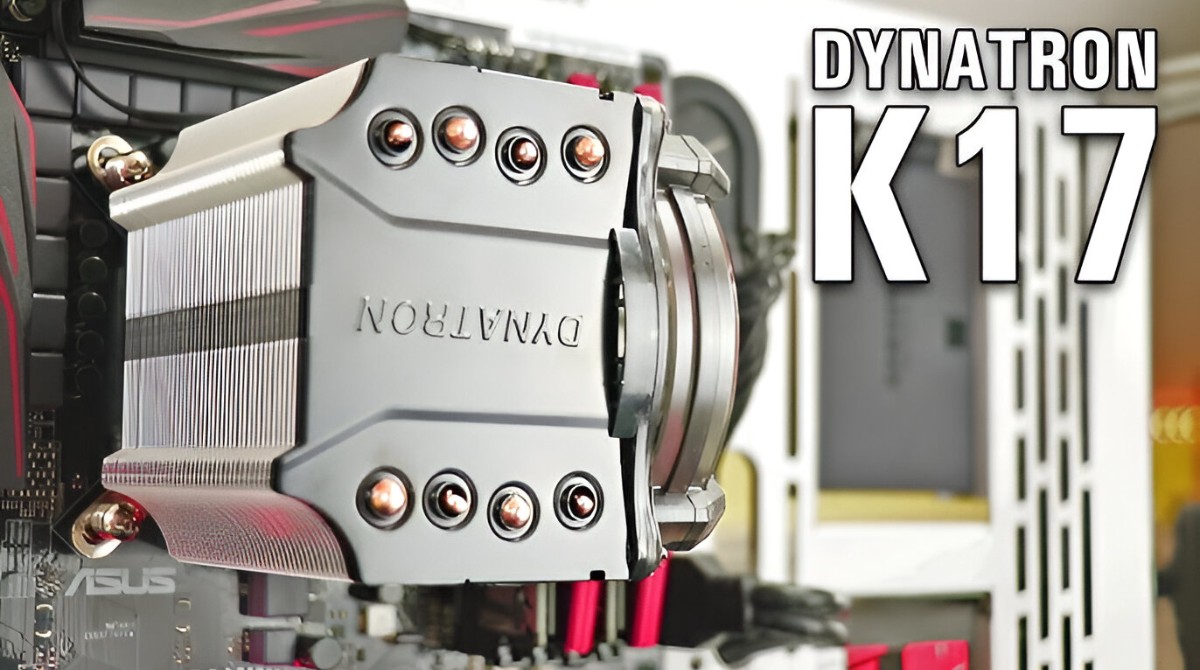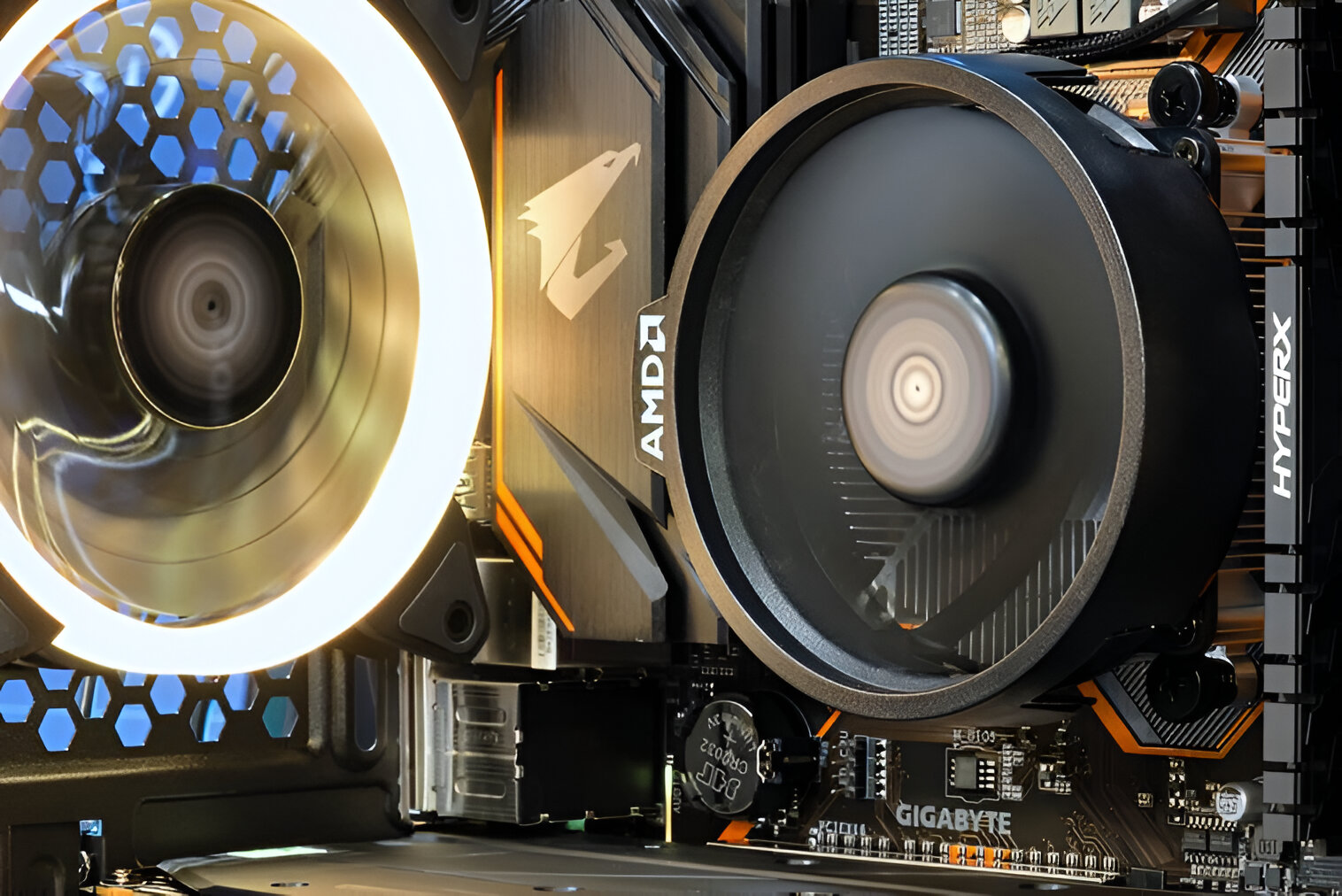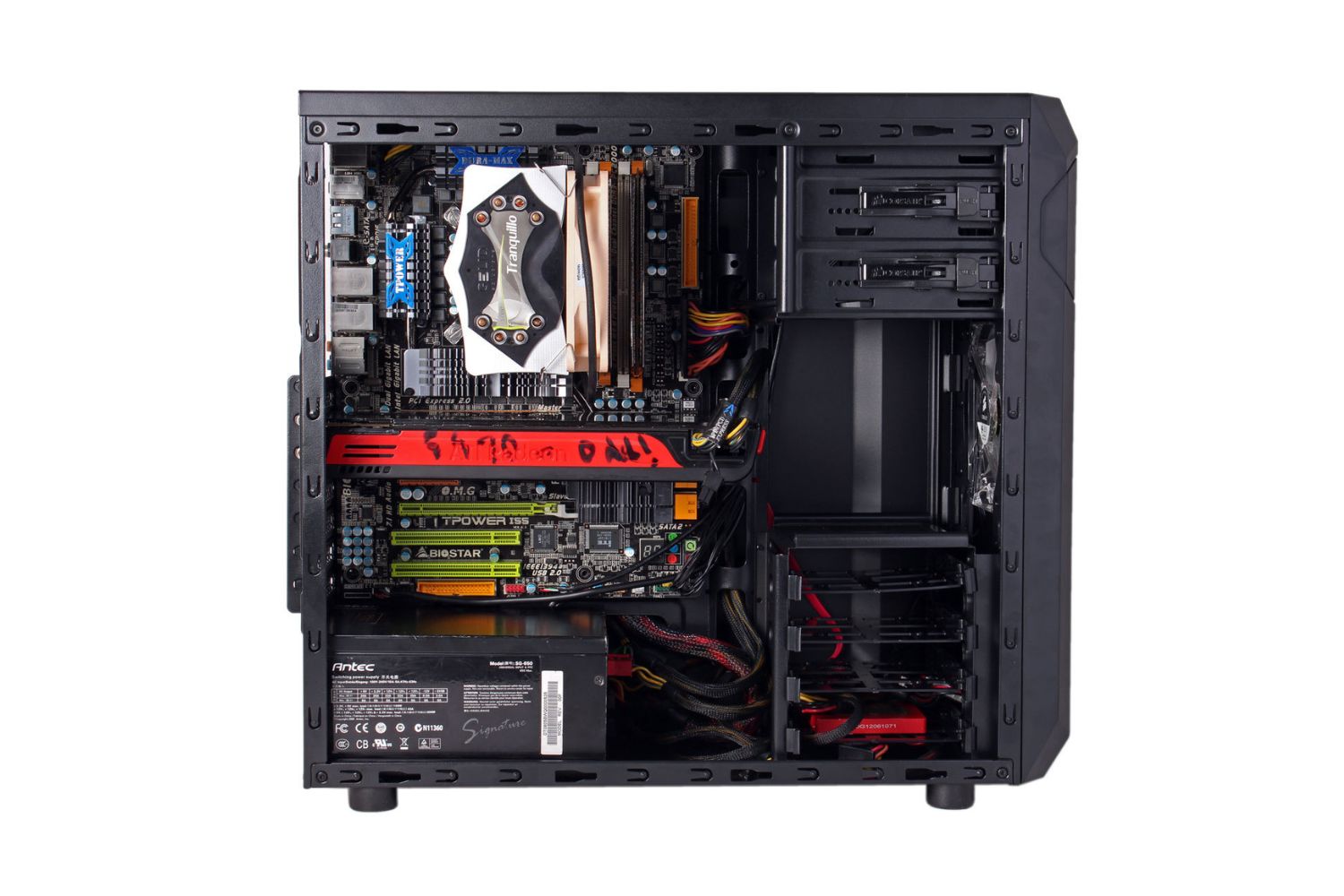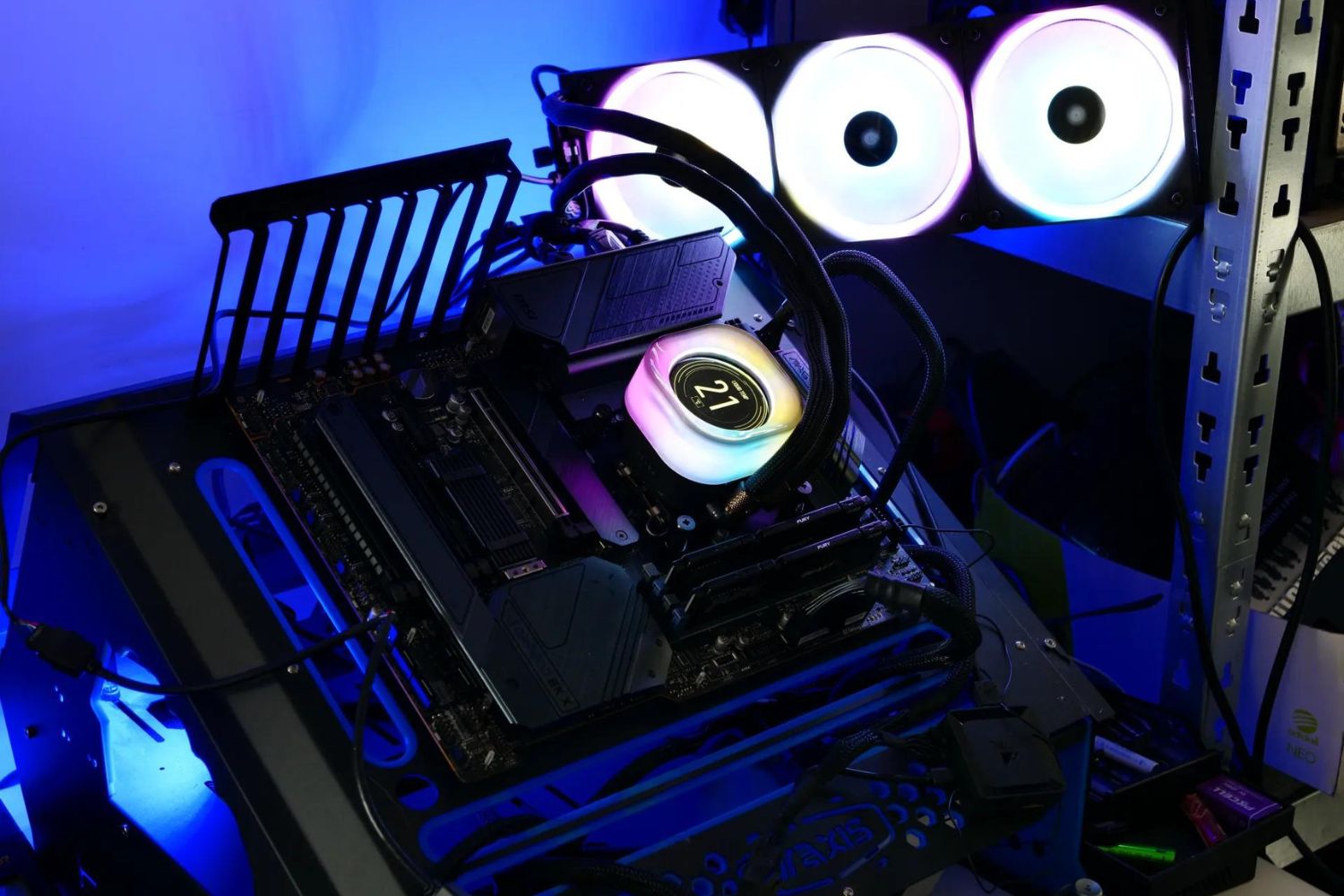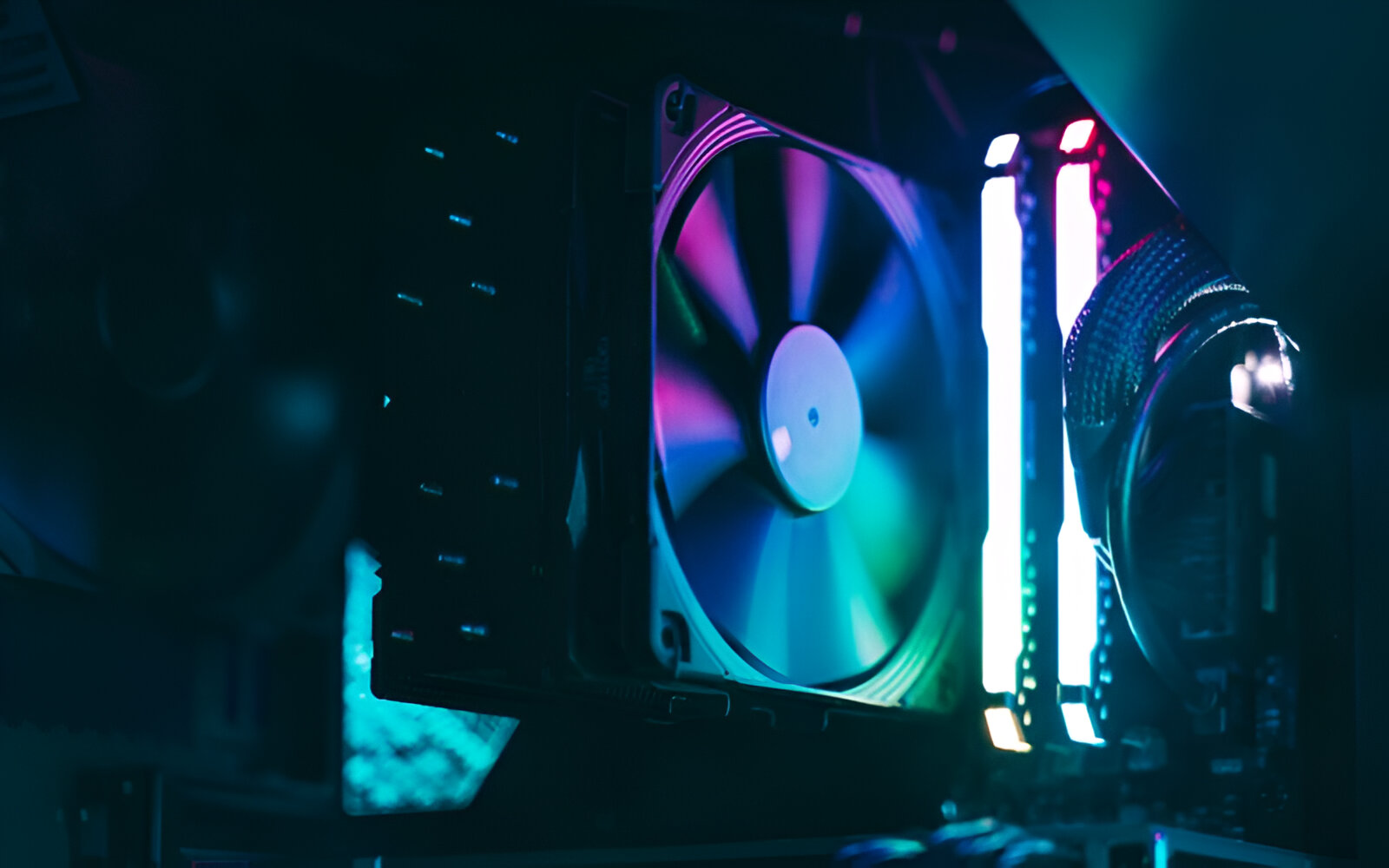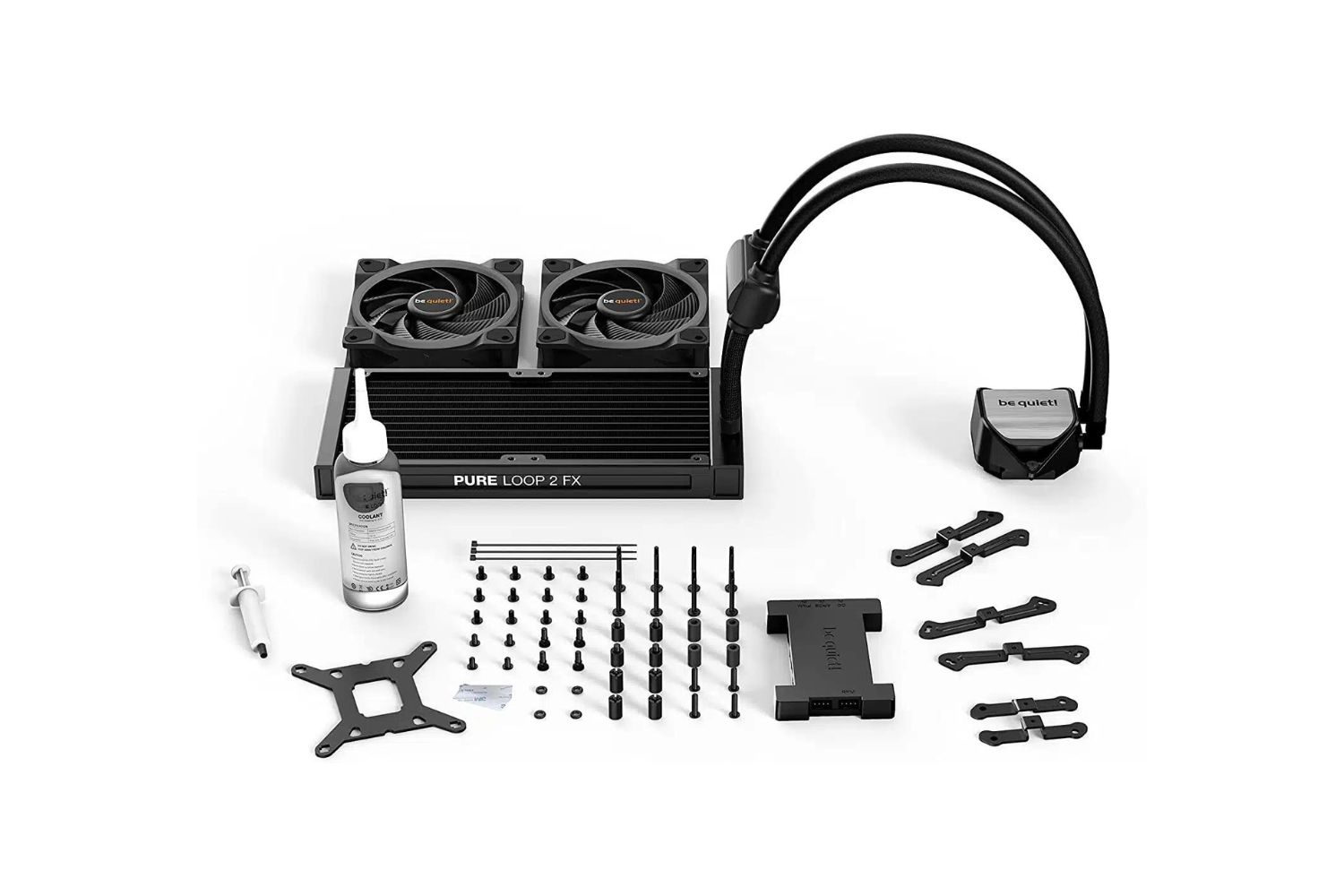Introduction
Welcome to this article where we will explore one of the crucial components of your computer – the CPU cooler. Whether you are an avid gamer, a professional video editor, or simply someone who needs their computer to perform at its best, understanding your CPU cooler is essential.
So, what exactly is a CPU cooler? To put it simply, a CPU cooler is a device that helps dissipate heat generated by the central processing unit (CPU) of your computer. While the CPU is the brain of the computer, it also produces a significant amount of heat during operation. This heat needs to be effectively managed to prevent overheating and potential damage to the CPU.
In this article, we will dive into the different types of CPU coolers available, including air coolers, liquid coolers, and stock coolers. We will also discuss how to identify the type of CPU cooler that you currently have installed in your computer, whether it’s a pre-built system or a custom-built rig.
Understanding the type of CPU cooler you have is important for several reasons. It impacts the overall performance and stability of your computer, as well as its ability to handle demanding tasks. Additionally, knowing which CPU cooler you have is helpful when it comes to upgrading or troubleshooting any cooling-related issues that may arise.
In the next sections, we will explore various methods to identify your CPU cooler, such as checking the model number or name, using third-party software, and referring to the manufacturer’s website. We will also discuss how the physical appearance of the cooler can provide clues about its type and compatibility with your system.
By the end of this article, you will have a clear understanding of the importance of your CPU cooler and be equipped with the knowledge to identify which type of cooler is currently installed in your computer. So, let’s dive in and unravel the mysteries of the CPU cooler!
What is a CPU Cooler?
A CPU cooler, as mentioned earlier, is a device that is responsible for dissipating the heat generated by the central processing unit (CPU) of your computer. The CPU is the primary component responsible for executing instructions and performing calculations in your computer system. As it carries out these tasks, it generates heat, which, if not managed properly, can lead to performance issues and even damage to the CPU.
The CPU cooler works by drawing heat away from the CPU and transferring it to the surrounding air or a liquid coolant. This process helps maintain the temperature of the CPU within acceptable limits, allowing it to operate safely and efficiently. Without a proper CPU cooler, the CPU can quickly reach high temperatures, resulting in thermal throttling, system instability, and possible hardware failures.
CPU coolers come in different types and sizes, each with its own method of heat dissipation. The two primary types of CPU coolers are air coolers and liquid coolers, also known as all-in-one (AIO) or closed-loop coolers.
Air coolers, as the name suggests, use air as the cooling medium. They consist of a heatsink, which is a metal fin array, and one or more fans. The heatsink is designed to provide a large surface area for heat exchange, while the fans blow air across the fins to facilitate heat dissipation. Air coolers are generally easy to install and offer good cooling performance, making them a popular choice for many users.
Liquid coolers, on the other hand, use a combination of a radiator, pump, and tubing to transfer heat away from the CPU. Liquid, typically a mixture of water and glycol, is circulated through the system, absorbing heat from the CPU and transferring it to the radiator. The radiator, equipped with fans, dissipates the heat into the surrounding air. Liquid coolers offer excellent cooling performance and can handle high thermal loads, making them ideal for overclocking and high-performance systems.
In addition to air coolers and liquid coolers, some computers come with stock coolers. Stock coolers are the CPU coolers that are included with the purchase of CPUs from manufacturers. They are designed to provide basic cooling capabilities for normal computer usage. While stock coolers are generally sufficient for everyday tasks, they may struggle to keep the CPU cool under heavy workloads or during overclocking.
Now that we have covered the basics of what a CPU cooler is and the different types available, let’s move on to the next section, where we will discuss how to identify the CPU cooler that you have installed in your computer.
Different Types of CPU Coolers
When it comes to CPU coolers, there are several different types available in the market. Understanding these different types can help you make an informed decision when choosing a cooling solution for your computer. Let’s take a closer look at the three primary types of CPU coolers: air coolers, liquid coolers, and stock coolers.
Air Coolers: Air coolers are the most common type of CPU coolers and are widely used by PC enthusiasts and gamers. These coolers consist of a heatsink made up of metal fins and a fan or multiple fans for active cooling. The heatsink absorbs the heat generated by the CPU and transfers it to the fins. The fan(s) then blow air across the fins, dissipating the heat and lowering the CPU temperature. Air coolers are known for their simplicity, affordability, and reliable performance. They come in various sizes and designs to accommodate different CPU sockets and case sizes.
Liquid Coolers: Liquid coolers, also known as all-in-one (AIO) or closed-loop coolers, have gained popularity in recent years, particularly among gaming and high-performance PC users. These coolers use liquid, typically a mix of water and glycol, to transfer heat away from the CPU. The liquid is circulated through tubes to a radiator equipped with one or more fans. The radiator dissipates the heat into the surrounding air, effectively cooling the CPU. Liquid coolers offer excellent cooling performance, especially for overclocked CPUs, and they are generally quieter compared to air coolers. However, they tend to be more expensive and require more complex installation.
Stock Coolers: Stock coolers are the CPU coolers that come bundled with the purchase of CPUs from manufacturers such as Intel or AMD. These coolers are designed to provide basic cooling capabilities for normal computer usage. Stock coolers are typically air coolers and are often tailored to the specific CPU model they come with. While they are suitable for everyday tasks and moderate workloads, they may struggle to keep the CPU cool under heavy loads or during overclocking. If you are using a stock cooler and experiencing high CPU temperatures, upgrading to an aftermarket cooler may be necessary.
It’s important to note that there are other specialized types of CPU coolers available as well, such as passive coolers that rely solely on heat dissipation without any fans, and custom loop liquid cooling systems that allow for more customization and advanced cooling options. However, these types of coolers are less common and usually cater to specific needs, such as extreme overclocking or building silent PCs.
Now that you have a better understanding of the different types of CPU coolers, let’s move on to the next section and learn how to identify the CPU cooler that is currently installed in your computer.
Air Coolers
Air coolers are one of the most popular and widely used types of CPU coolers. They are known for their simplicity, reliability, and affordability. Air coolers work by using a combination of a heatsink and one or more fans to dissipate heat from the CPU.
The main component of an air cooler is the heatsink, which is typically made up of metal fins. These fins provide a large surface area for heat exchange. As the CPU heats up, the heat is transferred to the heatsink through direct contact. The metal fins then help spread the heat across a larger area.
One or more fans are attached to the heatsink to facilitate airflow and enhance heat dissipation. The fans blow cool air onto the heatsink, which helps to cool down the metal fins and lower the temperature of the CPU. The airflow created by the fans can be further optimized by using design features such as heat pipes, which help conduct heat more efficiently from the CPU to the heatsink.
Air coolers come in various sizes and designs to accommodate different CPU sockets and case sizes. Some air coolers are designed to be compact and low-profile, making them suitable for small form factor builds. On the other hand, larger air coolers often provide better cooling performance and are preferred for high-performance systems or overclocking.
One advantage of air coolers is their ease of installation. They typically use mounting brackets or clips to securely attach to the CPU socket. Most air coolers come with thermal paste pre-applied or included, further simplifying the installation process. Additionally, air coolers require minimal maintenance, with occasional cleaning of the heatsink and fan(s) to remove dust and debris being the only necessary upkeep.
One consideration when using an air cooler is the clearance required within the computer case. Some larger air coolers may obstruct access to certain components, such as RAM slots. It is important to check the height specifications of the cooler and the clearance available in your case before making a purchase.
In terms of performance, air coolers provide effective cooling for a wide range of CPUs, including both mainstream and high-end processors. They can handle moderate overclocking and heavy workloads, although liquid coolers generally offer better cooling performance in extreme overclocking scenarios.
Overall, air coolers offer a reliable and cost-effective cooling solution for most computer users. They are easy to install, require minimal maintenance, and provide sufficient cooling for regular usage and moderate overclocking. If you are looking for a dependable cooling solution without the complexities and higher costs of liquid coolers, air coolers are an excellent choice.
Liquid Coolers
Liquid coolers, also known as all-in-one (AIO) or closed-loop coolers, have become increasingly popular among gamers and high-performance PC users. These coolers offer excellent cooling performance and are known for their ability to handle heavy workloads and extreme overclocking.
Liquid coolers work by using a combination of a pump, radiator, tubes, and liquid coolant to dissipate heat from the CPU. The liquid coolant, typically a mixture of water and glycol, circulates through tubes connected to the pump and the radiator. The pump pushes the liquid coolant towards the CPU, where it absorbs heat from the CPU’s heat spreader.
The heated liquid then travels through the tubes to the radiator, which is equipped with one or more fans. The fans blow air across the radiator, helping to transfer the heat from the liquid coolant to the surrounding air. This process cools down the liquid coolant, which is then circulated back to the CPU to repeat the cycle.
One advantage of liquid coolers is their ability to provide efficient cooling in high-demand situations. They are particularly well-suited for overclocking, where CPUs are pushed beyond their factory set limits. The larger surface area of the radiator, combined with the ability to dissipate heat through the liquid, allows liquid coolers to handle the increased thermal loads associated with overclocking.
Another benefit of liquid coolers is their relatively quiet operation. The absence of a large heatsink and fan(s) directly on top of the CPU results in reduced noise levels compared to air coolers. The radiator and fans are usually located at the back or top of the computer case, allowing for better airflow and less noise interference.
Installation of liquid coolers can be a bit more complex compared to air coolers. It involves mounting the radiator and fans to the case, connecting the tubes to the CPU water block or pump, and sometimes filling or bleeding the liquid coolant if necessary. However, all-in-one liquid coolers are designed for easy installation and usually come with comprehensive instructions to guide users through the process.
It is important to note that liquid coolers require regular maintenance to ensure optimal performance. The radiator and fans need to be cleaned periodically to remove dust and debris that can hinder airflow. Additionally, checking the liquid coolant level and quality is recommended to avoid any potential issues with the pump or clogging of the tubing.
In summary, liquid coolers provide excellent cooling performance and are ideal for users who demand high performance, overclock their CPUs, or simply want a quieter cooling solution. They may require a slightly more involved installation process and regular maintenance, but the benefits of superior cooling and reduced noise levels make them a popular choice among enthusiasts.
Stock Coolers
Stock coolers, also known as standard coolers, are the CPU coolers that come bundled with the purchase of CPUs from manufacturers such as Intel or AMD. These coolers are designed to provide basic cooling capabilities for normal computer usage.
Stock coolers are typically air coolers, although some CPUs may come with low-profile or compact cooler options. These coolers are designed to fit the specific CPU model they come with and are often built with cost-effectiveness in mind.
One advantage of stock coolers is that they are specifically tailored to the thermal requirements of the CPU they are bundled with. This ensures compatibility and provides sufficient cooling for regular computer usage, such as web browsing, document editing, and multimedia consumption.
Stock coolers are relatively easy to install since they often come with mounting mechanisms that are pre-installed or require minimal additional assembly. They usually include thermal paste that is pre-applied to the base or is provided separately but included in the package, eliminating the need for users to source thermal paste separately.
However, stock coolers have certain limitations compared to aftermarket coolers. They are typically designed for stock clock speeds and moderate workloads, meaning they may struggle to adequately cool down the CPU under heavy loads or during overclocking.
In terms of noise levels, stock coolers generally provide satisfactory acoustic performance, ensuring that your computer operates quietly during normal usage. However, under heavy loads where the CPU is running at higher temperatures, the fans on stock coolers may increase in speed, resulting in increased noise levels.
Upgrading to an aftermarket cooler may be necessary if you plan to push your CPU beyond its stock settings, engage in heavy multitasking, or run demanding applications that generate significant heat. Aftermarket coolers offer improved cooling performance and are better equipped to handle higher thermal loads, overclocking, and extended periods of intense usage.
Overall, stock coolers are suitable for everyday computing needs and offer a cost-effective cooling solution. However, if you require enhanced cooling performance or plan to engage in more demanding tasks, upgrading to an aftermarket cooler may be beneficial.
Now that we have explored the different types of CPU coolers, including air coolers, liquid coolers, and stock coolers, let’s move on to the next section where we will discuss how you can identify the specific CPU cooler that is currently installed in your computer.
How to Identify Your CPU Cooler
Identifying the type of CPU cooler installed in your computer is essential for various reasons, such as troubleshooting, upgrading, or ensuring compatibility with your system. There are several methods you can use to determine the specific CPU cooler that you have. Let’s explore a few of them:
Checking the Model Number or Name: One of the simplest ways to identify your CPU cooler is by checking its model number or name. The model number or name is usually printed or engraved on the cooler itself. It could be located on the fan, the heat sink, or the pump (if it’s a liquid cooler). Once you have found the model number or name, you can search for it online to gather more information about its specifications, compatibility, and performance.
Using Third-Party Software: There are various third-party software programs that can provide detailed system information, including the CPU cooler. Applications like CPU-Z, HWiNFO, or Speccy can retrieve hardware information from your computer and display it in an easily readable format. These programs can provide valuable insights about your CPU cooler, such as its manufacturer, model, fan speeds, and temperature readings.
Checking the Manufacturer’s Website: The manufacturer’s website is another reliable source of information about your CPU cooler. Most manufacturers provide comprehensive product support pages where you can find specifications, compatibility details, and sometimes even user manuals for their coolers. By visiting the website and searching for your CPU cooler model or navigating to the support section, you can access the necessary information about your cooler.
Looking at the Physical Appearance: Sometimes, you can identify your CPU cooler by simply examining its physical appearance. Air coolers and liquid coolers often have distinct designs and features that can help in identification. The shape and size of the heatsink, the presence of heat pipes, the arrangement and number of fans, and any branding or logos can be indicative of the specific cooler model or manufacturer.
Remember, it is essential to handle computer components with care. Before attempting to identify your CPU cooler or make any changes to your hardware, ensure that you take necessary precautions, such as turning off the computer, disconnecting the power supply, and grounding yourself to prevent static discharge.
By utilizing these methods – checking the model number or name, using third-party software, checking the manufacturer’s website, and examining the physical appearance – you can confidently identify the CPU cooler installed in your computer. This knowledge will enable you to make informed decisions regarding upgrades, compatibility, and troubleshooting, ultimately enhancing the performance and longevity of your computer system.
Checking the Model Number or Name
One of the simplest and most straightforward methods to identify your CPU cooler is by checking its model number or name. The model number or name is typically labeled or engraved on the cooler itself, providing valuable information about its specific make and model.
To locate the model number or name, start by inspecting the cooler’s surface. Look for any visible markings or labels that indicate the brand or model. These labels are commonly found on the fan, the heatsink, or the pump (if it is a liquid cooler).
Once you have identified the model number or name, your next step is to conduct a quick online search. Input the model number or name into a search engine to gather more information about your CPU cooler. The search results will likely lead you to the manufacturer’s website, product listings, or community forums where you can find detailed specifications, compatibility details, and user reviews for the cooler.
By exploring the manufacturer’s website, you can access specific product pages that provide comprehensive information about their coolers. These product pages often include detailed descriptions, technical specifications, and sometimes even user manuals or installation guides. You can use this information to better understand the capabilities of your CPU cooler and determine its compatibility with your system.
Additionally, visiting online retailers or computer hardware stores can also be helpful. They often provide product listings that include images, detailed descriptions, and customer reviews. This can further assist in confirming the model of your CPU cooler and gathering insights from other users who have firsthand experience with the cooler.
Checking the model number or name of your CPU cooler is an effective method to quickly identify the specific cooler installed in your computer. It allows you to access vital information about compatibility, performance, and any specific maintenance requirements associated with that particular model.
It is important to note that if you are unable to locate a model number or name on your CPU cooler, it may be a stock cooler that comes bundled with CPUs. In such cases, checking the manufacturer’s website or referring to the documentation that came with your CPU can provide additional information about the cooler.
By utilizing the power of online resources and conducting a simple search based on the model number or name, you can easily identify your CPU cooler and gain valuable insights into its specifications and features.
Using Third-Party Software
Another effective method to identify your CPU cooler is by using third-party software. A variety of applications are available that can retrieve detailed system information, including the type and model of your CPU cooler. These software programs provide a convenient and accessible way to access hardware information from your computer.
One popular application for this purpose is CPU-Z. CPU-Z is a lightweight and free software utility that provides in-depth information about your CPU and other hardware components. When you launch CPU-Z and navigate to the “Cooler” or “Cooling” tab, you can find details about your CPU cooler, including the manufacturer, model, fan speeds, and even temperature readings.
Another useful option is HWiNFO. HWiNFO is a comprehensive system information tool that allows you to gather detailed information about various hardware components in your computer. By running HWiNFO and navigating to the appropriate section, you can access specific details about your CPU cooler, such as the model, fan speeds, and temperature readings in real-time.
Speccy is another popular software that provides system information, including details about your CPU cooler. Speccy offers a user-friendly interface and presents information in a clear and organized manner. With Speccy, you can easily find the make, model, and other relevant information about your CPU cooler, enabling you to verify its specifications and compare it against the manufacturer’s details.
Using third-party software offers the advantage of providing comprehensive and accurate information about your CPU cooler without manual inspection. These software tools can quickly gather data about your hardware components and present it in a user-friendly format, allowing you to easily identify the model and other relevant details of your CPU cooler.
Furthermore, these software programs often offer additional features and functionalities that can be useful in monitoring and managing your CPU cooler’s performance. You can monitor fan speeds, temperatures, and other critical parameters in real-time, helping you keep an eye on the cooling efficiency and ensure optimal performance.
It’s worth noting that while third-party software is typically reliable and widely used, it’s important to download them from reputable sources to ensure that you are getting legitimate and up-to-date software versions. In addition, always be cautious of any bundled software or adware that may come with the installation process.
By using third-party software such as CPU-Z, HWiNFO, or Speccy, you can easily and accurately identify the specific model of your CPU cooler, access detailed information about its specifications, and monitor its performance in real-time.
Checking the Manufacturer’s Website
Another reliable method to identify your CPU cooler is by checking the manufacturer’s website. Most CPU cooler manufacturers provide comprehensive product support pages that contain valuable information about their coolers, including specifications, compatibility details, and other relevant documentation.
Start by determining the manufacturer of your CPU cooler. This information can usually be found by inspecting the cooler itself, the packaging it came in, or by referencing the documentation that came with your computer or CPU.
Once you have identified the manufacturer, visit their official website. Navigate to the support or product section, where you can search for your specific CPU cooler model or browse through their product lineup to find the relevant information.
Manufacturers often provide detailed product pages that offer comprehensive information about their coolers. These pages typically include specifications such as dimensions, weight, fan sizes, speeds, and compatibility details with different CPU socket types. You may also find information about the materials used in construction, warranty details, and any special features or technologies incorporated into the cooler.
In addition to specifications, manufacturers sometimes provide user manuals or installation guides that can be downloaded from their website. These resources can be helpful in understanding the installation process, ensuring proper installation, and learning about any maintenance requirements specific to your CPU cooler model.
When visiting the manufacturer’s website, you may also come across user forums or community sections where individuals discuss their experiences with specific CPU coolers. These forums can provide valuable insights, user reviews, and tips about certain models, helping you gather more information to make an informed decision about your CPU cooler.
Checking the manufacturer’s website is an excellent way to ensure that you have accurate and up-to-date information about your CPU cooler. It allows you to access official details from the manufacturer directly, providing you with reliable and trustworthy information about your cooler’s specifications and features.
Remember to note down any relevant information, such as the model number, specifications, or guides, while checking the manufacturer’s website. This can be helpful for future reference or when seeking support from the manufacturer if required.
By exploring the manufacturer’s website and utilizing the wealth of information they provide, you can confidently identify your CPU cooler and gain a deeper understanding of its capabilities, compatibility, and any specific maintenance requirements associated with that particular model.
Looking at the Physical Appearance
Another method to identify your CPU cooler is by examining its physical appearance. The design, features, and overall look of the cooler can provide valuable clues about its specific make and model.
Start by inspecting the cooler’s heatsink. Air coolers often have a large metal heatsink composed of numerous fins. The arrangement, shape, and size of these fins can vary among different models and manufacturers. Some coolers may have heat pipes incorporated into the design, which are usually visible as copper or nickel tubes running through the heatsink.
Observe the number and placement of fans on the cooler. Air coolers typically have one or more fans attached to the heatsink. Pay attention to the size, color, and design of the fans. Some coolers may feature a single large fan, while others may have multiple smaller fans arranged in various configurations. The presence of LED lighting on the fans or cooler itself can also provide a visual cue for identification.
Take note of any branding or logos on the cooler. Manufacturers often place their logo or brand name prominently on their products. Look for any identifying marks or labels that might indicate the manufacturer or specific model of the cooler.
Consider the overall size and shape of the cooler. Air coolers can vary in height, width, and depth, so comparing these dimensions to the specifications of various models can help narrow down the possibilities. Check if the cooler extends too far beyond the CPU socket, potentially obstructing other components or interfering with the dimensions of your computer case.
With liquid coolers, the design will involve a radiator, often accompanied by tubes for the liquid coolant flow. The radiator can be mounted on different locations in the case, such as the top, front, or back. Pay attention to the number and size of fans attached to the radiator and any branding or logos on the pump or CPU water block, where the cooler attaches to the CPU.
Comparing the physical appearance of your CPU cooler to images and descriptions on manufacturer websites, online retailers, or forums can help you identify the specific make and model. These visual cues can assist in confirming the details of your cooler and ensure accurate identification.
Keep in mind that physical appearance alone may not provide all the necessary information about the cooler’s specifications or compatibility. It is still beneficial to cross-reference the physical observations with other methods, such as checking the model number or using third-party software, to ensure the correct identification of your CPU cooler.
By carefully examining the physical appearance of your CPU cooler and comparing it to product images and descriptions, you can gather valuable hints that help you identify the specific make and model of your cooler with confidence.
Determining the Cooler’s Compatibility
When identifying your CPU cooler, it is important to consider its compatibility with your system. Ensuring that the cooler is compatible with your CPU socket and computer case is crucial for proper installation and optimal performance. Here are some key factors to consider when determining the compatibility of your CPU cooler:
CPU Socket Compatibility: One of the primary considerations is whether the cooler is compatible with your CPU socket. Different CPUs utilize specific socket types, such as Intel’s LGA and AMD’s AM4. Consult the manufacturer’s specifications for your cooler to confirm that it supports your CPU socket type. Additionally, check for any specific mounting mechanisms or adapters that may be required to ensure a proper fit.
Clearance: Check the dimensions of your cooler and compare them to the available space in your computer case. Ensure that there is sufficient clearance between the cooler and other components such as the RAM modules, PCIe cards, or VRM heatsinks on the motherboard. Measure the height, width, and length of the cooler and cross-reference it with the clearance specifications provided by your case manufacturer.
Power Supply Clearance: In some cases, the size and placement of the CPU cooler can interfere with the positioning or installation of the power supply unit (PSU) in the case. Ensure that there is enough clearance between the cooler and the PSU to avoid any compatibility issues.
Fan Placement: Consider the fan placement on the cooler and how it aligns with the airflow in your case. Ensure that the cooler’s fan(s) will not obstruct other fans in the case or disrupt the intended airflow pattern. Proper airflow management is crucial for efficient cooling and overall system performance.
Case Compatibility: Some cases have specific mounting brackets or configurations that may only support certain types of CPU coolers. Review the specifications of your case or consult the manufacturer’s website to determine if there are any restrictions or recommendations for compatible coolers.
Thermal Design Power (TDP): The TDP rating of your CPU cooler should be sufficient to handle the thermal load generated by your CPU. The TDP rating specifies the maximum amount of heat that the cooler is designed to dissipate. Ensure that the cooler’s TDP rating meets or exceeds the TDP of your CPU for effective cooling and proper operation.
By considering these compatibility factors, you can ensure that your CPU cooler is compatible with your system, allowing for a hassle-free installation and optimal cooling performance. It is crucial to thoroughly research and consult the manufacturer’s specifications and guidelines to verify compatibility and avoid compatibility issues when selecting or upgrading your CPU cooler.
Conclusion
Identifying your CPU cooler is essential for maintaining optimal performance, compatibility, and troubleshooting your computer system. We have explored various methods to help you determine the specific CPU cooler installed in your computer.
By checking the model number or name on the cooler itself, using third-party software to retrieve system information, examining the manufacturer’s website for product details, and considering the physical appearance of the cooler, you can confidently identify your CPU cooler model and gather valuable insights about its specifications and features.
Furthermore, understanding the different types of CPU coolers, such as air coolers, liquid coolers, and stock coolers, allows you to make informed decisions about cooling solutions that best suit your needs.
It is also important to consider the compatibility of your CPU cooler. Verifying compatibility with your CPU socket, computer case, clearance requirements, and power supply placement ensures a proper fit and efficient cooling performance.
Remember to approach any hardware identification or installation process with caution, following safety precautions and guidelines to prevent damage to your computer components.
By identifying your CPU cooler and having a thorough understanding of its specifications, compatibility, and maintenance requirements, you can ensure optimal cooling performance, system stability, and longevity for your computer.
We hope this article has provided you with the necessary knowledge and guidance to accurately identify your CPU cooler and make informed decisions regarding its maintenance, upgrade, or replacement.
Thank you for reading, and may your CPU stay cool and perform at its best!







